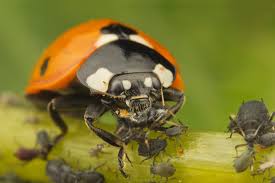Earwig
Forficula auricularia
Earwigs are an interesting insect, they can be considered beneficial insects, but they can also be considered a pest, they have scary rumors going around about going into yours ears at night to do who knows what, and they can look pretty scary . Earwigs can be a common sight in garden areas and if you are wondering what they are doing there, this post will tell you.
Well, when it comes to being a beneficial insect, Earwigs are a predator to aphids which are a common garden pest that tend to deform new growth and buds on many plants including roses. They also largely consume decomposing plant material.
On the other hand, the pest side of things, if they find a plant they like, or are forced to find above ground shelter because of rain, they are known to eat dahlia, chrysanthemum,clematis, seedlings, potted plants, basil, leafy greens, fruit trees, and occasionally strawberry, raspberry, nectarine and apricot, you will find the plants have been devoured over night, some leaves being ripped to shreds, others partially eaten through. They may leave small black particles of excrement behind as well. Avoid growing susceptible plants close to hedges and walls covered in ivy as these can house a large numbers of earwigs.
Earwigs are rarely seen during daylight unless a rock or other hiding place has been disturbed. They can be found in dark damp places like under rocks, in dense plants, mulch and compost piles.






